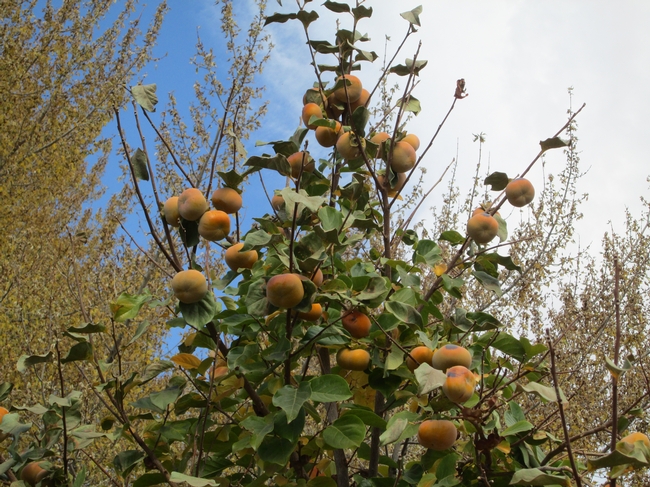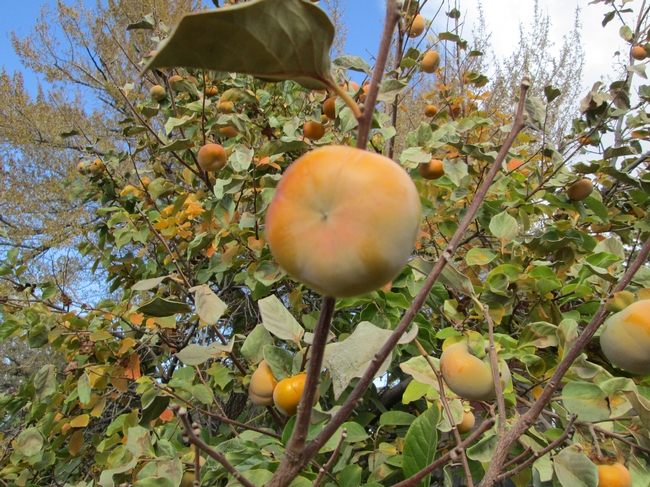One of the most beautiful autumnal sights is that of a leafless tree sporting a crop of brilliant orange, lantern-like 'Hachiya' persimmons ready for harvest. Not only is the fruit attractive, but many varieties sport spectacular fall leaf colors as well.
People sometimes buy a persimmon from a store to see what it is like, take one bite and throw it away, shocked by the astringency which puckers the lining of their mouth, without realizing how delicious it would become if allowed to ripen!
In a previous life a neighbor gave me permission to pick his 'Hachiya' fruit on condition that I take every last one because he did not like the wet, sticky mess that they made on his lawn. This became an annual event, and I would distribute dozens of fruits to neighbors.
I usually kept three large trays of fruit for myself which gradually ripened over a few weeks – all from one 12ft tree. They looked beautiful dehydrated (and tasted good too) but I also loved them fresh. Looking back I was very lucky not to get a condition called persimmon bezoar which affects some people who eat a lot of this fruit, when the persimmon fiber hardens in the gut and causes a blockage!
There are two basic types of persimmons: one that is native to eastern United States, Diospyros virginiana which forms a large tree up to 35 ft in ideal circumstances, and the Asian persimmon, Diospyros kaki which generally grows to only about 15 ft. but has larger fruit. There are many named varieties of this type, but fewer varieties of the American native types. There are also hybrids of the two types.

Fruit produced on American persimmons is small – about 2.0” in diameter, but the trees are very cold tolerant and varieties such as 'Meader' which was developed in New Hampshire will ripen even in cool summer areas. 'Nikita's Gift' is a hybrid of American and Asian varieties which is also cold tolerant but needs to be soft before eating. It also has spectacular fall foliage color.
Here is what you need to know about growing conditions:
- Zones: 5-9 For American varieties. 'Fuyu' and its large hybrid 'Jiro' will grow in zones 6-10.
- Exposure: Full sun with some protection from hottest sun in summer such as high shade.
- Soil: Any good, well-drained soil, can tolerate some wet soil but can also do well in lighter soils. Resistant to Oak Root Fungus.
- Irrigation: Regular watering is needed but can withstand some dry spells.
- Pollination: Many varieties are self-fertile and will produce few seeds. Some do need a different pollinating variety and may then produce seeds.
- Form: Trees need little pruning once the form has been established, removing dead or damaged wood, or cutting back any vigorous growth that might occur, and controlling the height. The wood is brittle. They fruit on current season's growth.
- Harvest time: From late October through November. Izu ripens earlier than most. Grafted trees will take about 3 years to begin fruiting.
- Pests: The trees are generally pest free.
As always buying a fruit tree is a long term investment so make sure that you study the information about growing conditions from a reliable source in order to avoid disappointment.
